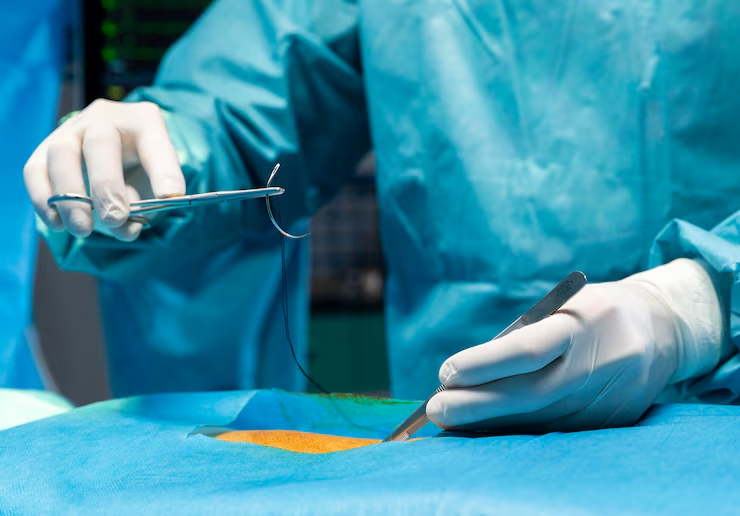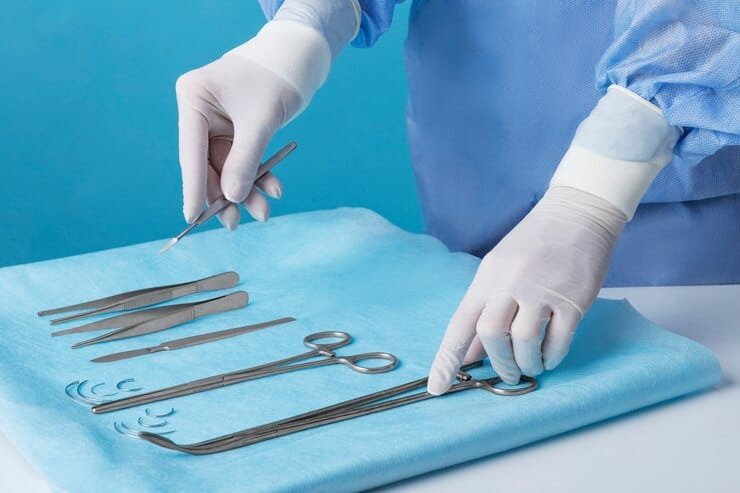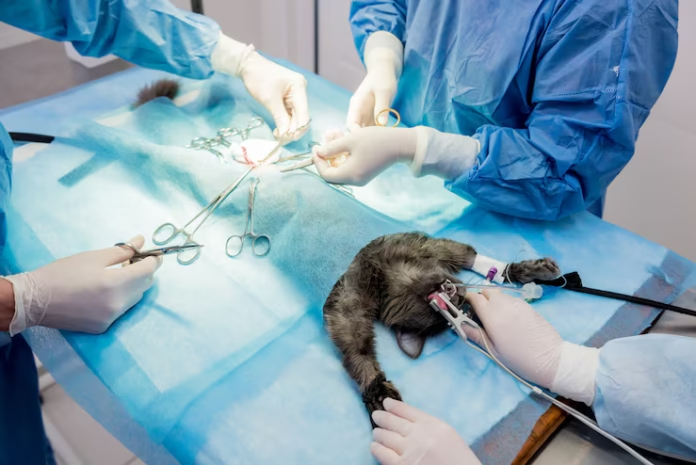Not Just Pets: A View of the Landscape
One can easily imagine a fluffy dog recuperating after a knee op, or a cat post-removal of a tumor. Sure, that is a lot of what we do, and it’s incredibly powerful. But animal surgery is so, so much deeper. Some of us perform intricate maneuvers, others of us have our own high-tech devices, the mast if you will. It’s not just about aiding our furry, feathered or scaly friends — it’s everything from fundamental research methodologies that revolutionized medicine, to innovative interventions that directly have made their way to saving lives of our own species. I mean really, what a ripple effect!
What This Means For You (And Me!)
It’s no secret animal health is a hot industry. (Because let’s be honest, your clinic is probably evidence of that!) But the progress we’re witnessing now is not something that came out of nowhere. They’re based on decades (even centuries!) of innovation, experiment, and some deeply committed individuals격s who pushed the limits. That history and how far we have come and where we were makes us know what we did; Qui and bach when we got there, we are a lot more missing picture to where we are and, more importantly, where we are headed.”
And that’s exactly what I hope we can explore here in this blog series. It’s about the “why” behind the movement — not just the how-to’s of operations. How did animal surgery, largely performed out of sight, play a role in reshaping the rules of modern healthcare? We are going to get into all of that. So get a cup of coffee, sit down and let’s begin. You’ll be surprised how much the scalpel’s revolution shaped the world as we know it today. I know I was!

Positive Trends – Cha-Ching!
- Pet Humanization & Higher Expenditures on Pets: So we all know that we are obsessed with our pets, right? The latest iteration of this “pet humanization” trend is gigantic. And that means that people are lavishing health care — including surgeries — on their furry, feathered or scaled companions. The amount of advanced procedures we see (such as hip replacements or cancer surgery) has increased. This is a huge opportunity for specialized vet practices and equipment makers. Take a company like Idexx;they are staying one step ahead by selling cutting-edge diagnostic tools.
- Technology — This is the technology of tomorrow. From minimally invasive surgery (MIS) to robotics to 3D printing for customized implants to more sophisticated imaging, all are making animal surgery safer, quicker, and more effective. And a company like Medtronic, which has origins in human surgery, is bringing this high-tech to veterinary medicine. If you’re a company in this space, this means investing in R&D and adopting these technologies. Not only does it result in better patient outcomes, but in a saturated market, it is also a good differentiator.
- Increasing Insurance Penetration: Pet insurance is on the rise! Being able to do that makes it easier for pet owners to say more likely “yes” to more expensive surgeries without having huge out-of-pocket costs. This creates demand and allows veterinary practices a degree of financial predictability, giving rise to opportunities for both insurers and veterinary service providers.
Adverse Trends – Uh Oh!
- Cost Concerns & Accessibility: all this cool tech and specialized care sounds nice, but it also makes surgery expensive.The Associated Press. But it also poses a barrier for some pet owners, in particular those who live outside cities, which creates unequal access to care. Imagine this: A family has a pet and the pet needs a specialized surgery and that family can’t afford the surgery – this problem exists. That poses a challenge for clinics that have to balance price and accessibility.
- Staffing shortages: There really is a shortage of veterinary surgeons and veterinary nurses. This stresses current practices, FSARs (because of higher wages to draw talent) and longer lead times for appointments. It’s an acute problem that could slow the development of the industry.
- Regulatory Challenges: The pathway to regulatory approval for new surgical devices, implants, and procedures can be long and expensive. This slows innovation and inhibits entry into the market by smaller companies. You know, it’s just a very part of the hoops you have to jump through, but you have to plan for it.
Actionable Insights – What to DO About it!
Leverage Positive Trends:
- Minister of Woebegone Economic Development: Career Advice for Falling Down the Job Escape Hatch Make R&D investments, partner with tech start-ups and educate your employees about the new processes.
- Niche Down: Choose your subspecialty such that you stand out in your knowledge domain. This may bring in clients who are willing to pay a premium for their specialised services.
- Synergy tie-ups: Tie up with Insurance firms to create tailor-made plans or with diagnostic labs that can facilitate targeted analysis.
Mitigate Adverse Trends:
- Motorized payment plans for holders of a credit card: Consider offering bi-weekly payment plans or as associate with funding companies to help alleviate the cost of procedures™
- Nurture Your Associates: Enact recruiting and retention strategies. Holdoff on some of that optimism if they ask: “How do you plan to offset these looming recession concerns in the market?” If you soften the blow a little though your social security plans, then you might want to offer competitive benefits, flexible work arrangements and opportunities for advancement. You could also concentrate on up-skilling existing employees to meet the ever-expanding demand.
- Follow US Market Regulations Smartly: Early on, formulate a solid regulatory strategy. It’s worth seeking counsel from expert consultants who have been in that space before.
In Conclusion:
Animal surgery is becoming an increasing trend in the veterinary field, but there can be some challenges. You are training up until October 2023. Watch for technology advancements and remember that pets are family now, so that need for quality treatment isn’t going away! Good luck, you got this!
Healthcare/Biotech
Techniques in animal surgery are extremely useful in designing novel human surgical techniques and medical devices. Consider this: Before a new heart valve gets tested on a human, they’ll often test it on a pig, whose heart is pretty darn close to ours. These trials provide researchers with tons of information on how the device works and what side effects they can expect. This helps to reduce the danger for human patients – so it’s kind of like your dress rehearsal before the big stage, right? In addition, surgical techniques developed using animals — such as minimally invasive procedures — can be transferred to human use, resulting in shorter recovery times and less pain.
Pharmaceuticals
Animal surgery is also critical for drug development. When a new drug is being formulated, it’s typically tested on animals, which can involve surgically implanting devices to deliver the drug. Or, surgeries can be part of the process of determining how well the drug is working.) We’re talking about things like testing pain meds effectiveness for surgical procedures to make sure that human dose is right. That is a key step before human clinical trials and it can give you a lot of important data in the preclinical stages.
Robotics & Technology
You heard it right, animal surgery also plays a role in robotics! Some delicate operations that have to be well precise, animal models prove crucial there. Animal subjects may be used to hone your skills on robotic surgery platforms. Surgical tools themselves would need to be developed and refined based on feedback from tests on animals who would require very precise surgical procedures. But it’s a really neat way to accelerate tech and use the animal surgeries to hone in on the tech.
Manufacturing
All right, that might seem less obvious, but the materials used to make surgical implants — for animals, and for humans — are always getting better. This categorization of material research is ongoing. This stuff is produced by manufacturing companies. They frequently test out new materials in animal surgery — perhaps to see how well an implant integrates with tissue or how strong it is or how long it lasts. So, this is a business where the innovation is directly linked to this animal research. “You are essentially using animal surgical models to enhance product quality and product safety.
Actionable Insights
So, what is all of this going to mean for your business? If you work in veterinary medicine, figuring out how the work you do helps humans get on the cutting edge can demonstrate your worth. And for those entrepreneurs out there, it is very obvious the potential for you to team up across industries leveraging your skill set. The vet world does not cage your research, it’s a key component in advancing new ways of working in many more sectors. You have to know that as an animal surgical models for surgical equipment or device manufacturer, the animal surgical models are the backbone of the overall product development cycle and you need to invest in it.
Organic Growth Strategies
- Improved Product Development: According to company initiative, companies are widely investing in R&D to enhance the existing surgical tools, as well as to manufacture the new ones. Think of minimally invasive instruments, more advanced imaging technology and biocompatible materials and all are designed to make procedures go easier and animals recover faster. That translates to more accurate cutting, better visualization and lower infection rates, which results in better outcomes.
- Specialized training programs: Companies are growing training programs for veterinary surgeons, as they recognize that great tech isn’t worth a dime without the skilled hands to use it. These programs tend to be hands-on and incorporate the newest equipment. This not only informs vets, but builds loyalty to the company’s products.
- Data and Connectivity: Digital solutions are increasingly linked to surgical devices Systems to track procedure data, optimize workflows, and monitor equipment performance in real-time to help you optimize surgical protocols are part of this. This enables everyone to do their job better because of data!
Inorganic Growth Strategies
- Acquisitions: Companies have made strategic acquisitions for small, specialized firms to expand their product lineup and technology quickly. For instance, if a large player purchases a startup developing orthopedic implants or engaged in robotic surgery, then innovations will be incorporated into its offering very quickly. This fills specific gaps in their offering instead of building everything themselves.
- Partnerships & Collaborations: Businesses are partnering with universities, research institutes, and other tech companies. These Partnerships are intended to facilitate research and development. Imagine a surgery company that collaborates with a material science lab to design a new type of surgical thread.
- Expansion into Other Markets: There is a clear motivator to provide market reach to more vets worldwide A lot of companies are building their own distribution networks in underserved areas or buying up local distributors to enter new territories, thus making their products available in more practices. It’s also a strategy to diversify revenue streams.
-

Outlook & Summary: Where’s This All Heading?
Hey there, surgery whiz! So, you’ve been reading about how animal surgeries have, in fact, the silent builders of the health-care system as we know it. It’s pretty wild, right? Fast forward to the next 5-10 years, we’re going to see even more extremely cool innovations. I mean minimally invasive tech becoming standard practice, AI giving doctors a hand with diagnosis and planning (remember when robots started doing surgical procedures?), and an increasingly aggressive push for personalized medicine for your furry, scaled, and feathered patients.
This area isn’t something geeky, it is to vet medicine army what engine room is to a ship. In many cases, advances in animal surgery contribute to advances in human medicine — pretty cool right?
The Big TakeAway: It’s All Connected
So, what is the central lesson you should be learning? Well, it’s this: the breakthroughs we achieve in animal surgery are felt beyond their immediate sphere. They lead innovation throughout all of veterinary medicine, they impact human health care, and they are, quite honestly, the leading edge of what is possible. We’re talking about a constant cycle of realization and betterment, and you, me, us, right here in the eye of this whirlwind.
The day-in, day-out is so easy to get wrapped up in, but taking the wider-angle lens view makes it all crystal clear how important animal surgery is to the journey. It’s certainly not just about mending broken bones or excising tumors. “What I see are you pioneers, blazing the trail for better health everywhere.”
And finally, with all of this in mind, and with a sense of where things are going… what’s one innovation, whether in animal surgery or not, that you are most looking forward to digging deeper on in the years ahead? What do you think, let me know, I am really interested!

